5 min. reading
What is Harmony in Interior Design? A Guide to Creating Cohesive Spaces
Juliy Cherevko
CEO paintit.ai

Page Contents:
- 1. What Does Harmony Mean in Interior Design?
- 2. What is Unity in Interior Design?
- 3. Harmony vs. Unity: What's the Real Difference?
- 4. 3 Simple Examples of Unity in Design
- 5. How to Achieve Harmony: Examples Using Color, Texture, and Scale
- 6. The Final Ingredient: Why You Also Need Variety
- 7. Conclusion: From Blueprint to Beautiful Space
In the world of interior design, we often talk about the core "principles"-balance, rhythm, emphasis, and contrast. But among them, the two principles that consistently cause the most confusion are harmony and unity.
They sound the same, and frankly, many definitions make them seem interchangeable. So, what is harmony in interior design? And how is it truly different from unity?
As a design-tech team, we love deconstructing complex ideas. The answer is simpler than you think: one is the blueprint, and the other is the beautiful result. This article will clear up the confusion and give you the practical tools to create truly cohesive spaces.
What Does Harmony Mean in Interior Design?
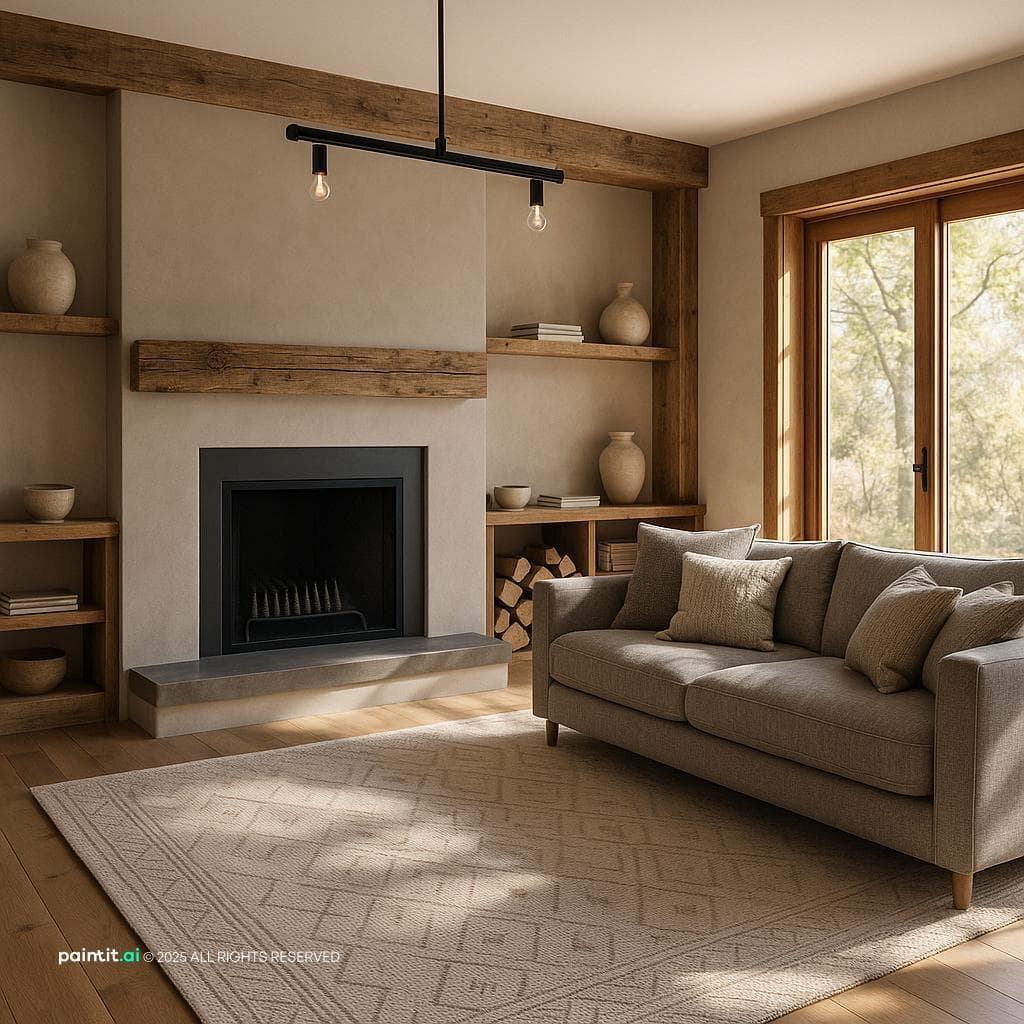
Harmony is the feeling you get when you walk into a well-designed room.
It's the subjective, emotional result of a successful design. Harmony is the sense of calm and peace that comes when all the separate elements-the furniture, colors, textures, and decor-look like they belong together.
It's that "ahhh" feeling when nothing is clashing, nothing feels out of place, and the entire space just feels right. It's the pleasant arrangement of parts that creates a sense of visual rest. If a room feels "off" or chaotic, it's likely lacking harmony.
What is Unity in Interior Design?
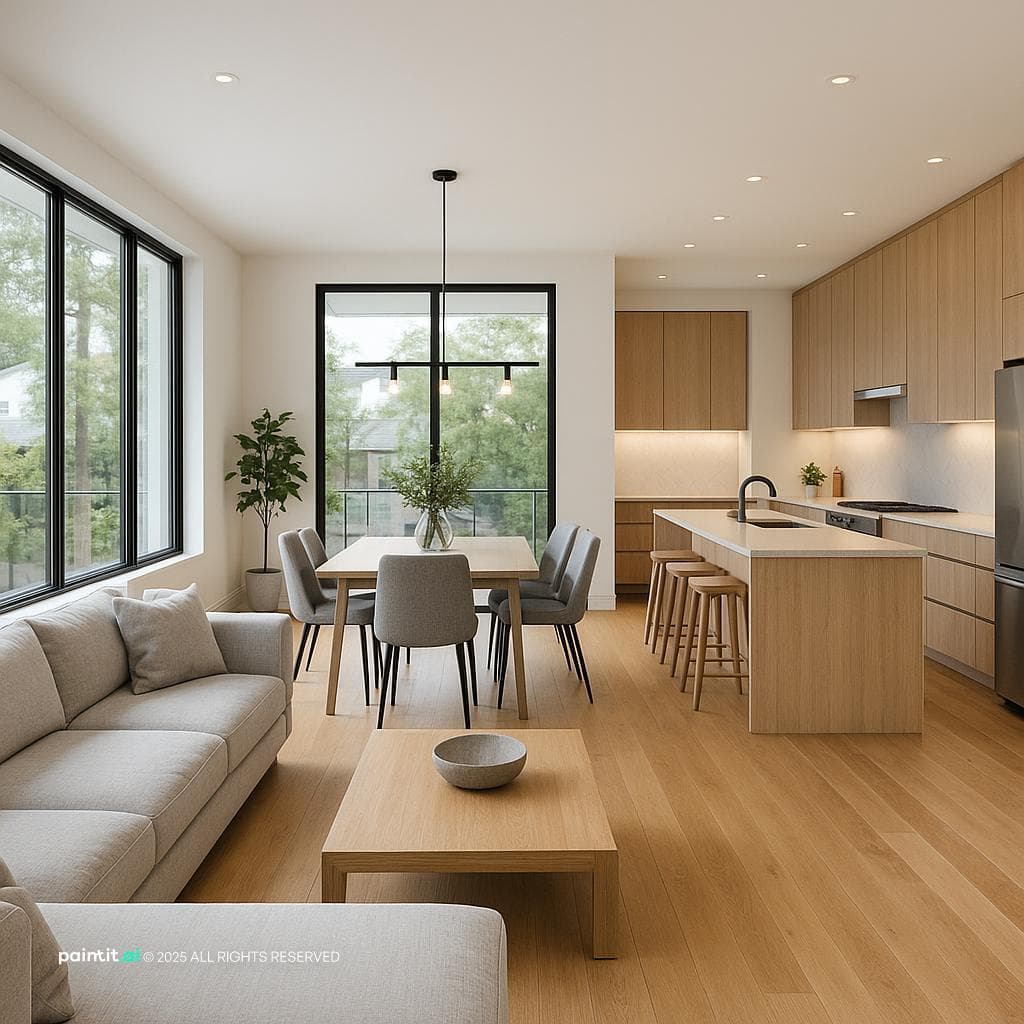
If harmony is the feeling, unity is the structure.
Unity is the set of tools and techniques used to physically tie the space together. It's the "glue" that creates a sense of "wholeness" or cohesion, ensuring all parts are meaningfully related.
While harmony is the subjective result, unity is the objective, measurable method you use to get there. It's the underlying blueprint that makes the design feel complete and interconnected.
Harmony vs. Unity: What's the Real Difference?
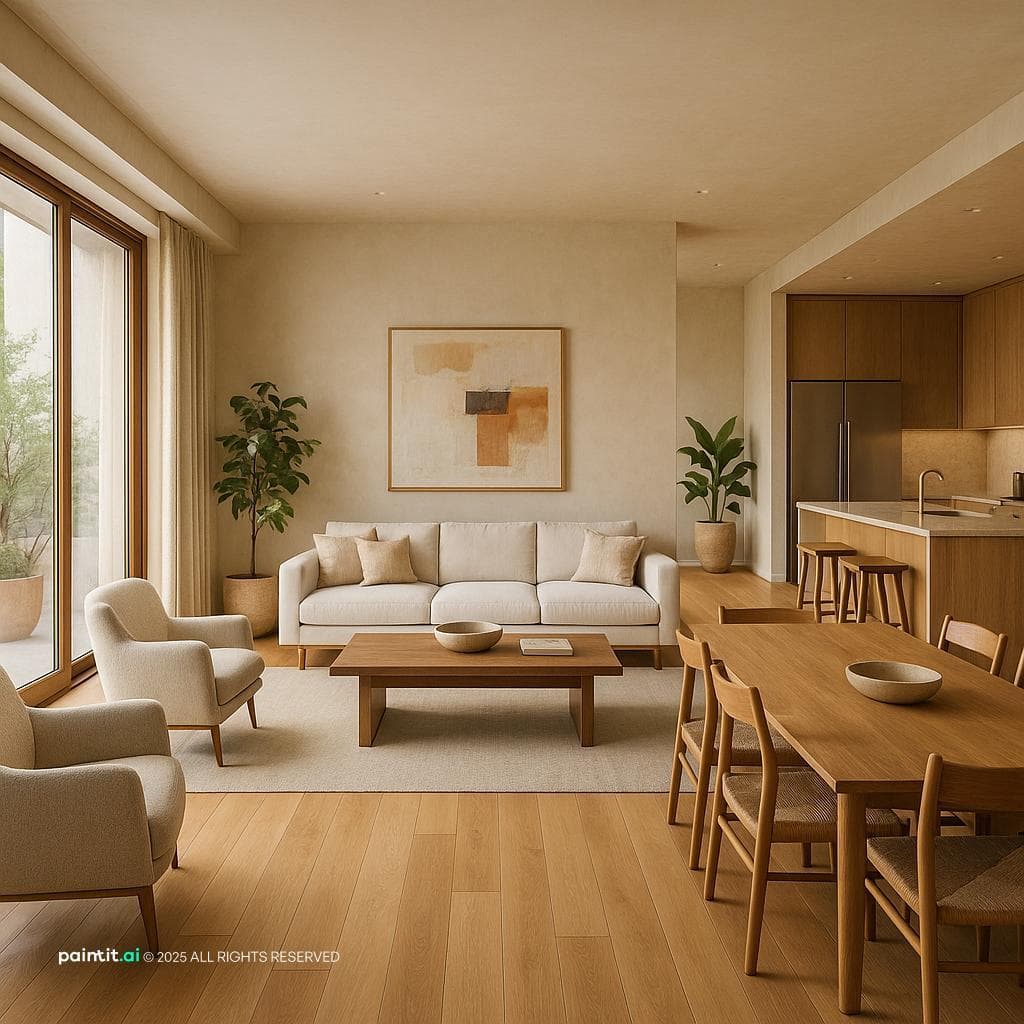
Here is the single most important takeaway: Unity is the technique you use. Harmony is the pleasing result you feel.
The critical distinction is that you can have unity without harmony.
Imagine a room where every single object-the sofa, the walls, the rug, the curtains-is a bright, neon-pink color. That room has powerful unity (achieved through the repetition of color), but is it harmonious? Absolutely not. It's jarring, chaotic, and overwhelming.
Harmony is what happens when unity is done well. It's the successful, aesthetically pleasing outcome of your unified design choices. You use the tools of unity to build a framework, and you use balance, scale, and color theory to make that framework harmonious.
3 Simple Examples of Unity in Design
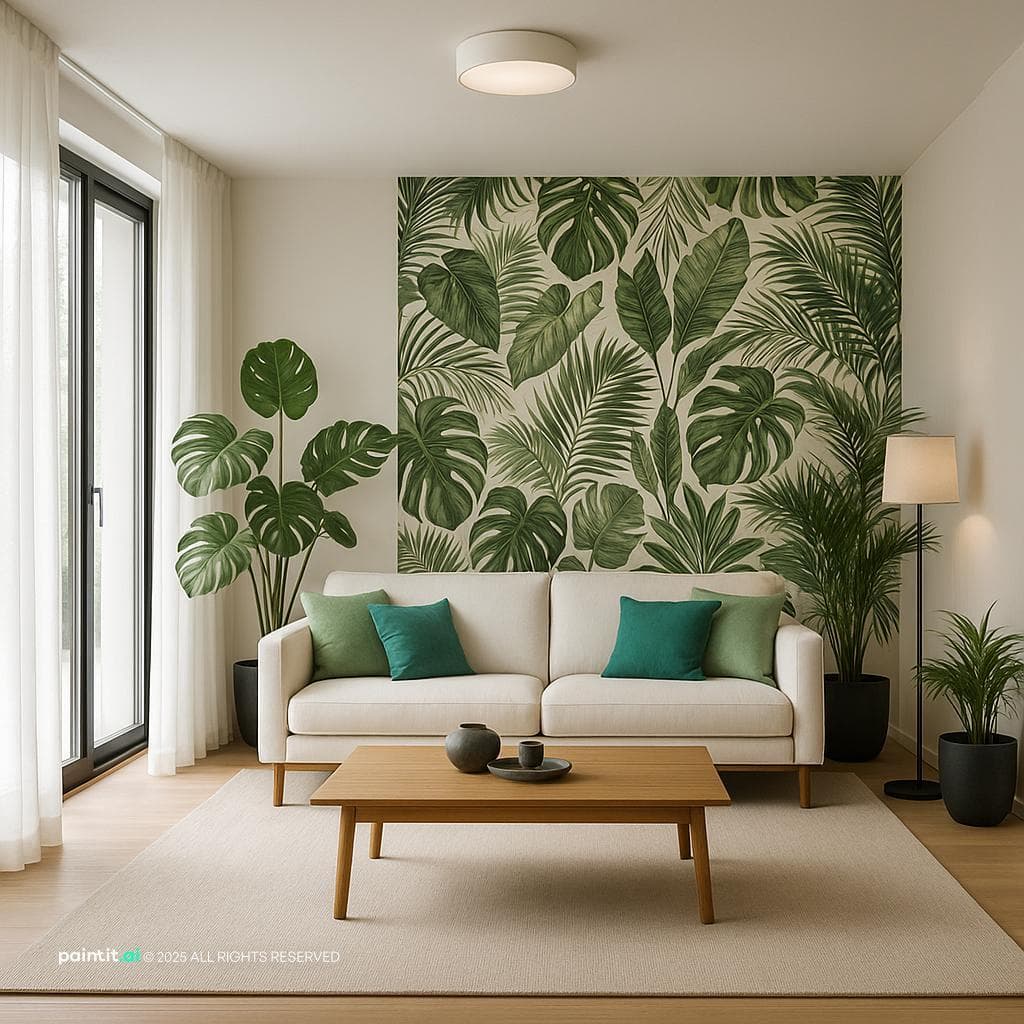
Unity is your toolkit. To make this concept clear, let's look at 3 simple examples of unity in design that you can use as your blueprint.
1. Repetition
This is the most powerful and common tool for creating unity. It's the act of purposefully repeating specific elements to create a visual thread that pulls the space together. You can repeat:
- Color: Using the same accent color (e.g., black) in picture frames, cabinet hardware, and light fixtures.
- Shape: Repeating a circular shape in a mirror, a rug pattern, and the curve of a chair.
- Material or Texture: Consistently using the same wood finish or metal (like brass) throughout the space.
2. Proximity
Proximity is the simple act of grouping related items together. A sofa, two chairs, and a coffee table grouped closely on a rug are perceived by our brains as a single, unified "conversation zone," not four separate objects. This is the core of good AI room design, which understands that this "zone" is a single entity.
3. Alignment
Alignment is the practice of placing elements along a common, invisible line. When the top of a picture frame, a window, and a bookshelf are all aligned, it creates a subtle, powerful sense of order and connection. This technique provides a clean, intentional look, which is a key component of unity.
How to Achieve Harmony: Examples Using Color, Texture, and Scale
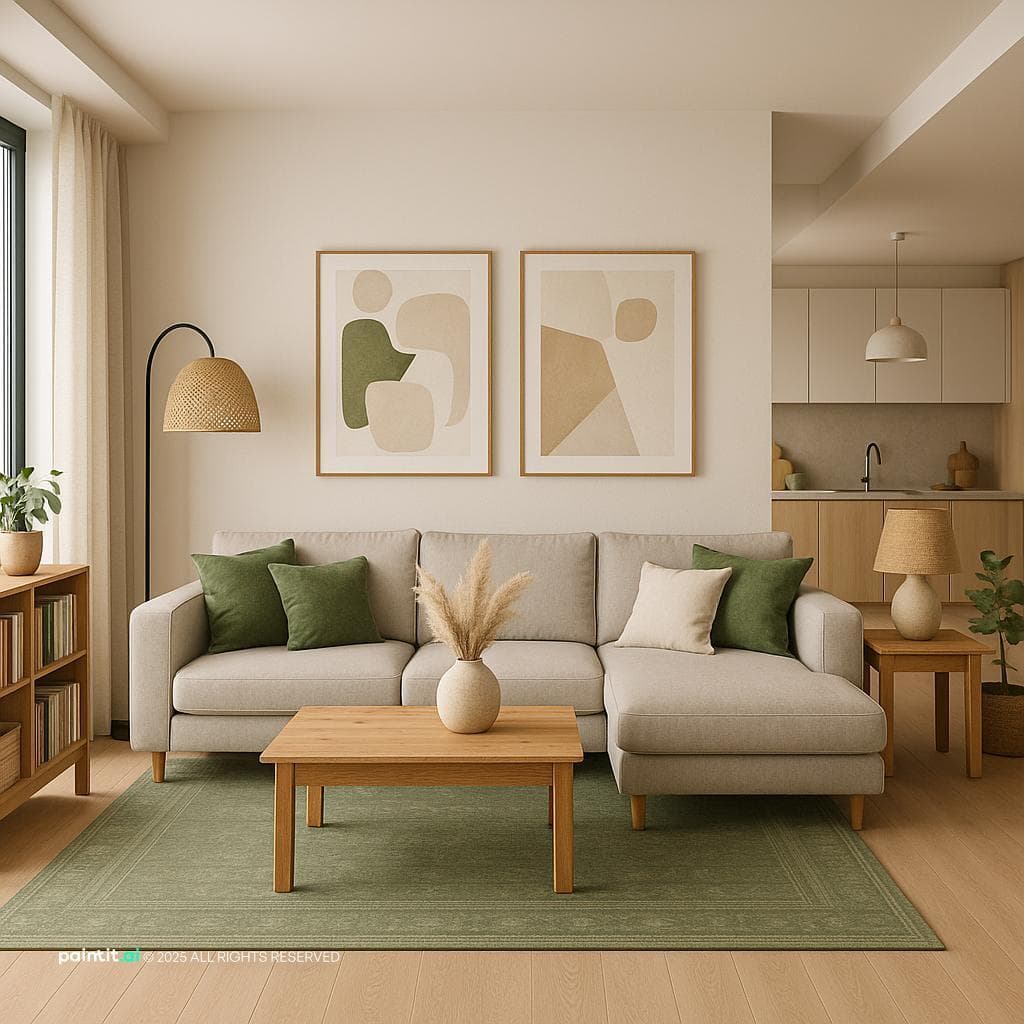
Now that you have the tools for unity, how do you ensure the result is harmonious? Let's look at some practical examples of harmony in interior design.
Using Color Schemes
This is the biggest factor. Harmony isn't just repeating a color (that's unity); it's creating a pleasing palette. Using established color schemes is a shortcut to harmony.
- A monochromatic scheme (different shades and tints of one single color) is inherently calming and harmonious.
- An analogous scheme (colors that sit next to each other on the color wheel, like blue and green) also creates a low-conflict, restful feeling.
Balancing Textures
A room with only smooth, hard surfaces (all wood, glass, and metal) or only soft surfaces (all carpet, velvet, and fleece) lacks harmony. Harmony is achieved by balancing these tactile elements: the roughness of a wooden table, the softness of a wool rug, the sleekness of a metal lamp, and the plushness of a velvet cushion.
Getting Scale & Proportion Right
This is the hidden rule of harmony. A design cannot be harmonious if its scale is wrong. If a massive, overstuffed sofa is crammed into a tiny room, it will feel "off" and create disharmony, even if the colors and theme are unified. The pieces must be in proportion to each other and, most importantly, to the room itself.
The Final Ingredient: Why You Also Need Variety
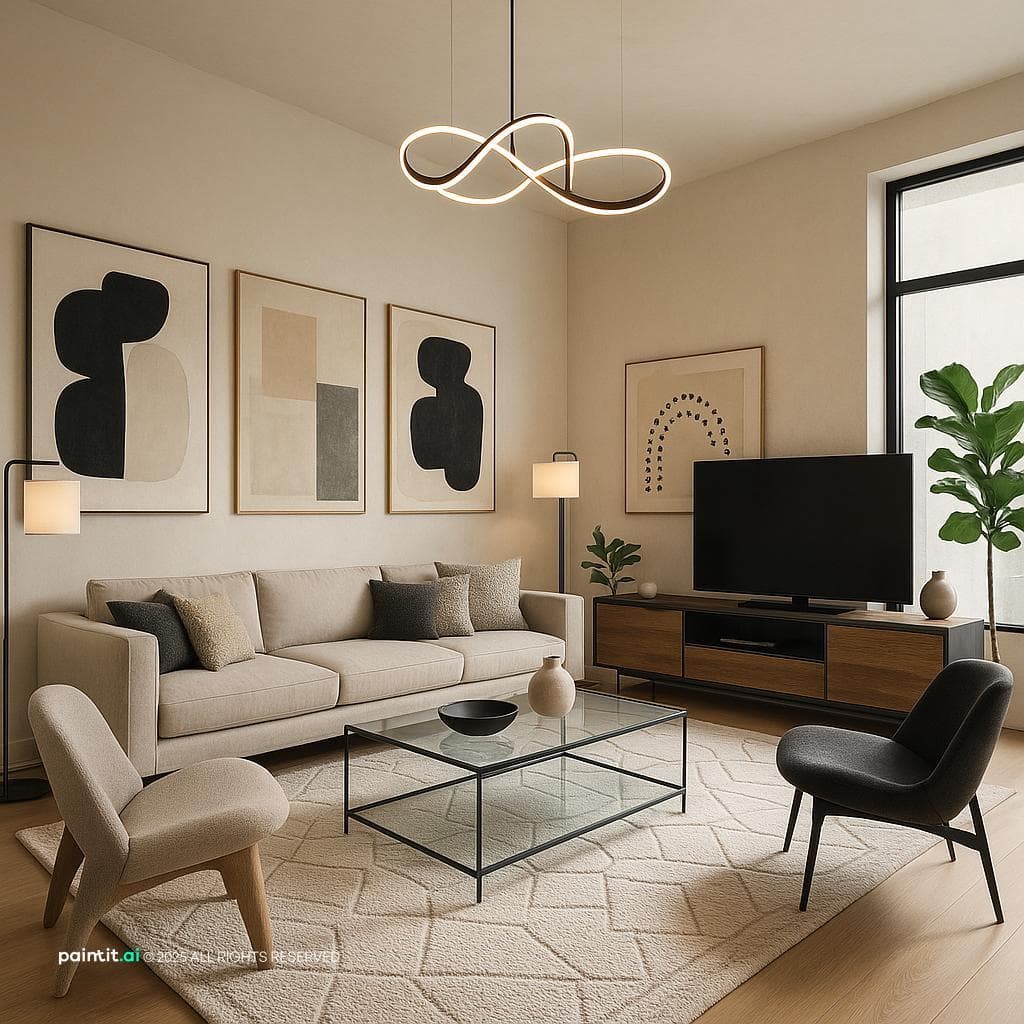
There's a danger in focusing too much on harmony and unity. You can create a space that is perfectly unified and technically harmonious... but also completely boring.
This is the classic "matchy-matchy" trap, where everything is from the same furniture set, and nothing stands out. This is where the principle of Variety comes in.
Variety is the controlled introduction of contrast or an "unexpected element." It's the one thing that "pops" and adds personality. It could be a bold piece of art, a brightly colored accent chair, or a unique light fixture.
By having a strong foundation of unity and harmony, you create the perfect backdrop for a single element of variety to shine, adding life and personality without creating chaos. Need help finding that perfect piece? Our AI Concept Generator can help you brainstorm ideas that fit your unified theme.
Conclusion: From Blueprint to Beautiful Space
Understanding the difference between harmony and unity is a true "level-up" moment in design.
Remember it this way:
- Unity is your structural blueprint (using tools like repetition and proximity).
- Harmony is the beautiful, calm feeling of the finished space.
- Variety is the sparkle that gives it personality.
By mastering how these three principles work together, you can move beyond just "decorating" a room and start truly designing it. And if you need help visualizing that final, harmonious space, our AI rendering tools are built to turn your blueprint into a beautiful reality.
Trending
Top 6 Homestyler Alternatives: Best Tools for Instant Interior Design
Preppy Bedroom Ideas: How to Master the New Traditionalism
Expert Review of AI Virtual Staging Platforms for Precise Furniture Selection
What Are the Best Spacely AI Alternatives?
The Future of Design 2030: How Agentic AI & Paintit.ai Will Transform Your Home
Related articles

9 min read
Interior Design Trends Winter 2025-2026 & H1 Forecast: The Era of Emotion
Discover the defining interior design trends for Winter 2025/2026. From Moody Palettes and Warm Minimalism to the explosion of Dopamine Decor, explore the forecast with Paintit.ai
Juliy Cherevko
CEO paintit.ai

9 min read
Top 6 Homestyler Alternatives: Best Tools for Instant Interior Design
Searching for Homestyler alternatives? We compare the 5 best tools of 2025. From complex manual modeling to instant AI design with Paintit.ai. Read the review.
Juliy Cherevko
CEO paintit.ai

7 min read
Preppy Bedroom Ideas: How to Master the New Traditionalism
Discover 15 trendy preppy bedroom ideas for 2025. Learn how to mix patterns, choose perfect preppy wall colors, and style iconic furniture
Juliy Cherevko
CEO paintit.ai

16 min read
Expert Review of AI Virtual Staging Platforms for Precise Furniture Selection
Compare AI virtual staging platforms focused on furniture style selection, customization features, pricing, speed, and usability for property design
Juliy Cherevko
CEO paintit.ai

6 min read
What Are the Best Spacely AI Alternatives?
s Spacely AI worth it? Discover the best alternatives for architects and agents. Detailed review of Paintit.ai, RoomGPT, and others
Juliy Cherevko
CEO paintit.ai

5 min read
The Future of Design 2030: How Agentic AI & Paintit.ai Will Transform Your Home
Tired of managing renovations? By 2030, Agentic AI will do it for you. Explore Paintit.ai’s vision for autonomous design and the Agent-to-Agent economy
Juliy Cherevko
CEO paintit.ai